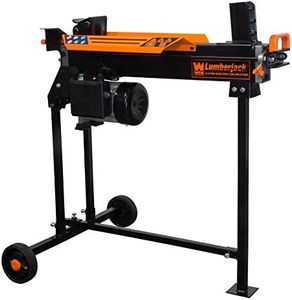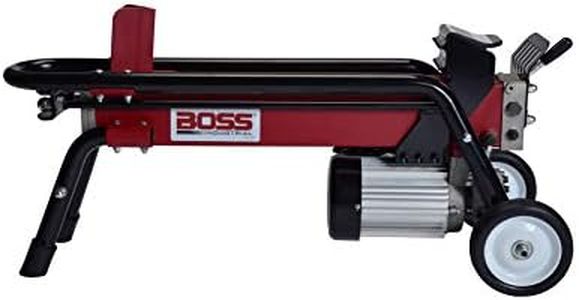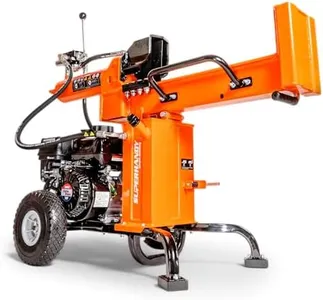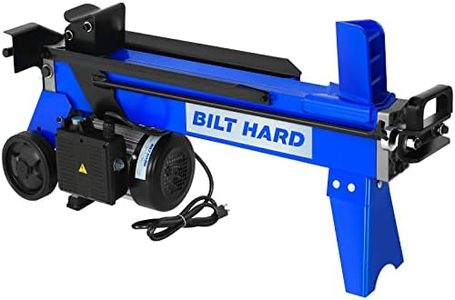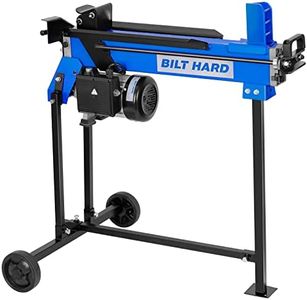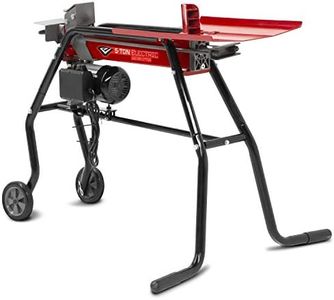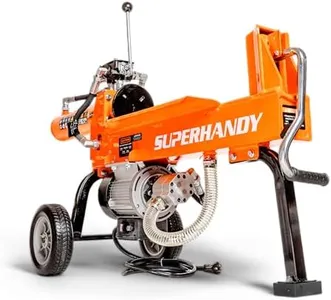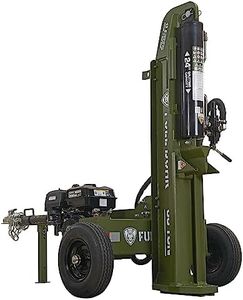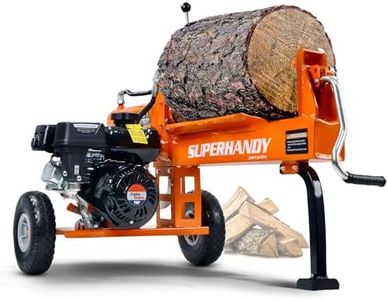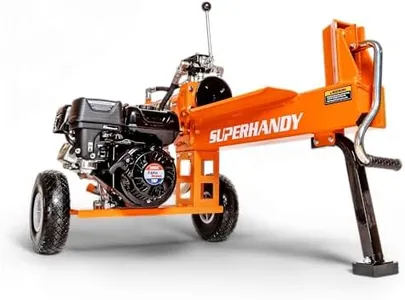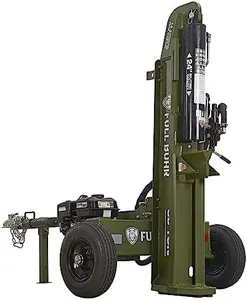10 Best Electric Log Splitters 2025 in the United States
Our technology thoroughly searches through the online shopping world, reviewing hundreds of sites. We then process and analyze this information, updating in real-time to bring you the latest top-rated products. This way, you always get the best and most current options available.

Our Top Picks
Winner
WEN Electric Log Splitter, 6.5-Ton Capacity with Portable Stand (56208)
Most important from
2898 reviews
The WEN Electric Log Splitter is a solid option for those looking to tackle log splitting tasks efficiently. With a 6.5-ton capacity, it's powered by a robust 15A motor that provides impressive log cracking pressure, making it suitable for both small and medium-sized logs. The ability to split logs up to 10 inches in diameter and 20.5 inches in length means it can handle a variety of wood types, making it versatile for users who require a reliable splitting tool.
One of the standout features is its portability. The included pull handle and never-flat wheels enable easy transportation, allowing users to move it effortlessly to different locations. The option to use the splitter with or without the 34-inch stand adds to its convenience, accommodating different user preferences.
In terms of safety and maintenance, being electric means no gasoline is required, which eliminates concerns about carbon monoxide emissions and reduces upkeep compared to gas-powered models. This makes it an eco-friendly choice for users who prioritize safety and sustainability. However, the 118.7-pound weight may be a consideration for some users, especially if you anticipate moving it frequently over long distances. Additionally, users looking to split larger or tougher logs might find the 6.5-ton capacity limiting, as it may struggle with very dense hardwoods beyond its specifications.
Most important from
2898 reviews
YARDMAX YS0650 6.5 Ton Electric Log Splitter
Most important from
94 reviews
The YARDMAX YS0650 6.5 Ton Electric Log Splitter is designed for those looking to efficiently split logs with minimal effort. Its powerful 6.5-ton RAM force ensures that it can handle tough splitting jobs quickly, making it suitable for both light and moderate use. The log splitter can accommodate logs up to 20.5 inches in length and 10 inches in diameter, which covers a good range of standard firewood sizes, making it versatile for various wood types and tasks.
This machine is also relatively portable considering its size, though at 104.7 pounds, it might require some effort to move around, especially on uneven terrain. However, its compact dimensions (43 x 21 x 13 inches) mean it won’t take up too much storage space when not in use. From a safety perspective, the YARDMAX includes features to ensure safe operation; potential users should always follow the manufacturer’s safety guidelines to prevent accidents.
It is designed for home use rather than professional logging, considering its power and capacity, making it ideal for homeowners with fireplaces or wood-burning stoves who need to prepare their own firewood. The YARDMAX YS0650 serves well for home use with its strong performance and decent log capacity, though potential buyers should consider its weight and the dated model.
Most important from
94 reviews
Boss Industrial 7 Ton Lightweight Portable High Powered Hydraulic Electric Firewood Log Splitter with Rubber Wheels for Home, Garage, or Cabin, Red
Most important from
904 reviews
The Boss Industrial 7 Ton Electric Log Splitter is a powerful tool designed for splitting logs with ease. It delivers a significant splitting force of 7 tons and has a hydraulic pressure of 3700 PSI, which allows it to handle tough jobs effortlessly. The motor power stands at 2 horsepower, ensuring reliable performance.
With a cycle time of 14 seconds, this splitter is fairly quick, minimizing downtime between splits. It accommodates logs up to 20.5 inches in length and 10 inches in diameter, making it suitable for most home use cases. The electric design makes it convenient for use both indoors and outdoors, and the rubber wheels add to its portability, allowing you to move it around easily despite its 117-pound weight.
Safety is well-considered with built-in side rails that keep logs stable during splitting and a front handle that aids in maneuvering the machine. The steel construction adds to its durability, ensuring it can withstand regular use over time. However, its weight might be a bit cumbersome for some users to handle easily, and the cycle time, while decent, is not the fastest available in the market. This log splitter is best suited for homeowners needing a reliable, powerful, and portable machine for splitting firewood in their backyards or garages.
Most important from
904 reviews
Buying Guide for the Best Electric Log Splitters
Choosing the right electric log splitter can make your wood splitting tasks much easier and more efficient. Electric log splitters are a great option for those who need a reliable and powerful tool without the hassle of gas engines. When selecting an electric log splitter, it's important to consider several key specifications to ensure you get the best fit for your needs. Understanding these specs will help you make an informed decision and find a model that suits your specific requirements.FAQ
Most Popular Categories Right Now


